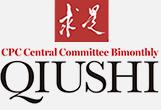Contemporary Value of the Yangtze River Culture
Today, the Yangtze River Economic Belt, which spans much of China’s eastern, central, and western regions, accounts for around half of the country’s population and economic output. It not only showcases vivid practices for advancing Chinese modernization but also offers unique solutions for developing a strong socialist culture in China.
Carefully preserving the historical and cultural heritage of the Yangtze River
Our historical and cultural heritage is a precious resource that cannot be recovered or replaced once lost. Therefore, we must redouble our efforts to preserve it. The Third National Survey of Cultural Relics, which began in 2007 and ended in 2011, reveals that the Yangtze River Basin houses 306,000 immovable cultural heritage sites—about 39.8% of the national total. These abundant historical and cultural landmarks, which are dispersed throughout the region, are a testimony to the deep and ancient roots of the Yangtze River culture and a showcase for its creativity and appeal. They form an important foundation for its preservation.
With protecting and carrying forward this legacy as our foremost priority, we must ensure the right balance between protection on the one hand and utilization and development on the other. Protection should always take precedence—development should only proceed on the condition of protection and with protective measures applied throughout the process. This means we must focus on developing our protection system, improving relevant organizations, enhancing mechanisms, and developing solid legal safeguards, so as to keep raising the level of protection for the Yangtze River’s historical and cultural heritage.
Telling the stories of the Yangtze River and passing on the Yangtze River culture
When passing on our historical and cultural heritage, we must carry forward both the heritage itself and the Chinese wisdom and spirit it embodies. To disseminate the Yangtze River culture, we must use stories as a means to reveal its essence and enhance our capacity for presentation and communication. We should strengthen research into the Yangtze River culture’s origins and development context and fully explore the multifaceted value of related artifacts and heritage.
With a focus on harnessing advanced socialist culture, revolutionary culture, and the best of traditional Chinese culture, we should do more to showcase the Chinese culture, spirit, and style that underlie the Yangtze River culture. We should also work to foster a positive social atmosphere for carrying forward Chinese civilization, striving to strengthen awareness of the Yangtze River culture in order to help people, especially the youth, better understand and identify with our nation and culture.
Integrating the Yangtze River culture with modern daily life
To fully protect and utilize our historical and cultural heritage, we must make sure that it plays a larger role in people’s everyday lives, and has its influence felt in the way how they dress, eat, live, and travel.
To harness the edifying role of arts and literature, we should produce more outstanding works of literature and art related to the Yangtze River culture and showcase the beauty of China’s history, lands, and culture. We should enhance public cultural services in the Yangtze River Basin. This will see us improving supply, developing new mechanisms, and raising efficiency with a view to embedding the Yangtze River culture into our public cultural products and services.
We should upgrade the culture and tourism industries in the Yangtze River Basin, advance the development of the Yangtze River International Golden Tourism Belt, and promote stronger integration between the culture and tourism sectors. Efforts should be made to strengthen international exchanges and communication on the Yangtze River culture and to enhance its global reach. Finally, we should leverage the guiding role of the Yangtze River culture by making it an integral part of regional urban and rural development. In this way, we can facilitate coordinated development between the upper, middle, and lower reaches of the river and propel the overall social and economic development of the Yangtze River Economic Belt.
Editor: Yi Xiaowei
























